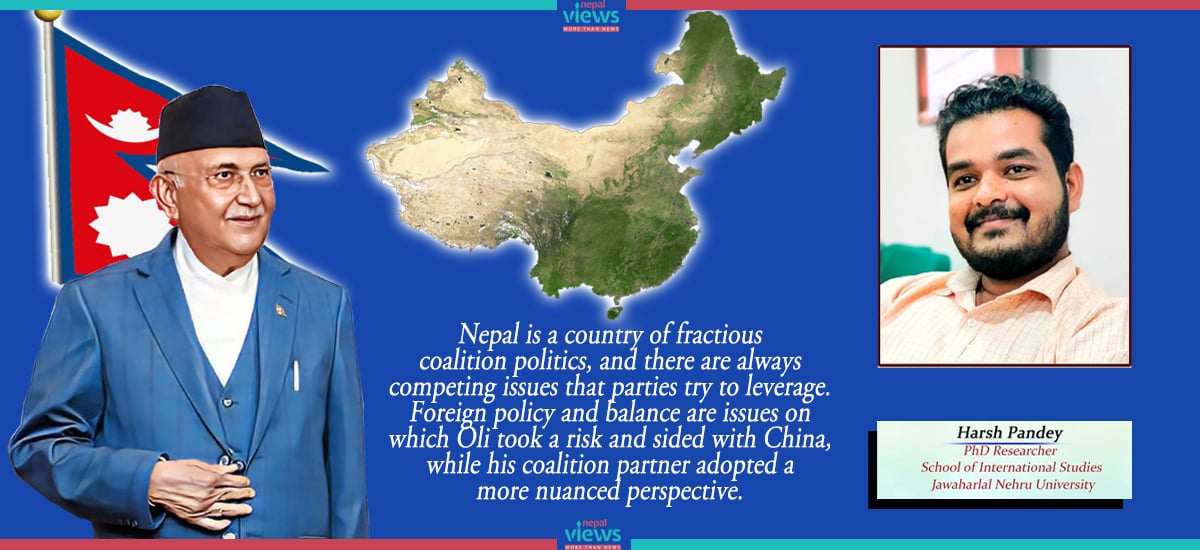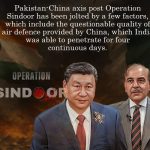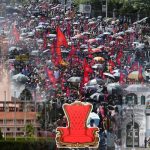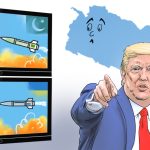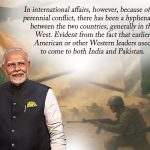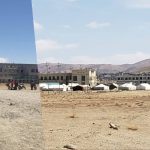Kathmandu: At the beginning of the month, Nepal’s Prime Minister KP Sharma Oli embarked on a four-day visit to China. This was a break from the traditional pattern of the newly appointed leaders of Nepal choosing India for their maiden visits.
Nevertheless, Oli met his Indian counterpart on the sidelines of the UNGA New York in September. Earlier, the foreign minister of Nepal, Arzu Deuba Rana, also visited India after the formation of a new government that developed a coalition between the Nepal Congress (NC) and Oli’s Communist Party of Nepal CPN (UML).
Before the visit, there was a scuffle between the coalition partners where NC urged China to consider giving grants on the whooping more than 200 million US dollars as a relief from the staggering loan that went on to construct Pokhara International Airport. After two years of being inaugural, the airport has yet to be financially viable.
NC has urged its coalition partner and PM Oli not to sign any loan agreement with China. The visit has both domestic and geopolitical implications.
In this article, we will analyze what Oli tried to achieve through this visit and whether he became successful in it. The other sections will look into the domestic and geopolitical challenges of the visit.
What yielded from the visit to Nepal and Oli?
The most important things that came out from Oli’s visit are as follows. Both signed the “Framework for Belt and Road Cooperation,” which would outline cooperation over infrastructural development works like road upgrading and transportation corridors.
Replacing the term “grant financing” with “aid financing,” this shift might encompass both grants and loans. An exchange of letters was conducted for the construction of the Tokha-Chhahare Tunnel Road, a critical infrastructure project aimed at improving connectivity.
The Memorandum of Understanding has been inked in pursuit of strengthening bilateral trade between Nepal and China, concentrating on the reduction of trade barriers and bolstering bilateral trade. A protocol regarding the export of Nepali thermally processed buffalo meat has been issued to China, which will help open new markets for Nepali agricultural products.
Other than that, bilateral agreements happened on Chinese language teachers in Nepal and the development of communication technologies in Nepal.
Considering the show and pomp that this visit has garnered, one can say that it was somewhat successful. Nevertheless, the devil lies in details. During Oli’s visit and earlier, Nepal tried to address the financial issues relating to the Pokhara International Airport. This project was financed through China’s Exim Bank.
Accordingly, in August 2024, Deputy Prime Minister and Finance Minister Bishnu Prasad Paudel appealed to China to convert its already existing loan for the project into a grant, considering that this airport is underperforming, given Nepal’s economic difficulties.
A formal letter was officially provided when Yang Weiqun, Vice Chairman of the China International Development Cooperation Agency, visited Nepal. Till December 2024, China has not decided anything on converting the loan from Pokhara International Airport to a grant, despite Nepals repeated requests. Discussions that were supposed to take place during the visit of the prime minister did not bring out any decisive results on the issue.
Analysis of Party-to-Party Relation between CPC and Nepal Communist Parties
Domestic Implications
The Nepali Congress had been wary of accepting loans for the BRI projects, citing that it might leave Nepal with debt implications. Before Oli’s visit, a task force formed by members of both the NC and CPN (UML) had agreed to undertake BRI projects only on grant assistance, but the agreement signed during the visit mentioned ‘aid assistance,’ a term that some leaders of the NC find vague.
Former National Planning Commission chairperson and NC leader Govinda Raj Pokharel criticized the party leadership as “ad-hoc and immature” and questioned the about-turn from the original stance against loans.
The opposition parties have scrutinized Oli’s visit, raising many concerns regarding the geopolitical and economic implications of getting closer to China. Concerns are raised over increasing dependence on Chinese investments in Nepal and erosion of sovereignty.
The opposition leaders even stated that this visit would further strain Nepal’s relations with India and other traditional allies and told the government to maintain a balanced foreign policy. There have been internal tensions within the ruling coalition because of the varying viewpoints.
The CPN (UML), with Prime Minister Oli, is leaning towards accepting both grants and concessional loans under BRI, but the apprehensions from the NC side are creating a rift. If it is not addressed, then the discord would be a problem for the cohesion of the coalition, thus affecting the stability of the government.
It must be noted that the terms of the BRI framework agreement between Nepal and China signed on 4 December 2024 have not been fully disclosed. The agreement merely indicates a commitment to collaborate on various infrastructure projects, while information related to financial modalities, criteria for project selection, and timelines for implementation remains scarce.
Geopolitical Implications
It is safe to say that the main challenge that Oli will face now is on his domestic political turf, as no immediate reaction has come from Nepal’s closest ally, India. Analysts in India have been skeptical about the outcome of Oli’s visit. With his record of anti-India rhetoric, analysts feel that Oli’s engagement with China is indicative of a strategic realignment. India closely watched Oli’s visit, considering the earlier tense relations between the two nations during his first tenure.
Nevertheless, the current regime of Nepal has to balance both India and the USA on this matter. While India is still observing the evolved situation, it is the US that might worry Nepal. Donald Trump’s return to the presidency and the possible involvement of the likes of Elon Musk in pushing forward U.S. interests in Nepal is adding new dynamics to Nepal-U.S. relations, particularly against the backdrop of increasing Chinese influence.
With Trump historically being hawkish on China, the relationship between the U.S. and Nepal is likely to evolve in strategic lines aligned with Washington’s broader Indo-Pacific vision.
In conclusion, it is safe to say that the immediate challenge that will arise from PM Oli’s China visit is to mitigate the domestic political questions that his allies and opposition will ask him, the most important of which will be why there is no decision regarding the Pokhara International Airport.
Nepal is a country of fractious coalition politics, and there are always competing issues that parties try to leverage. Foreign policy and balance are issues on which Oli took a risk and sided with China, while his coalition partner adopted a more nuanced perspective. As the terms of engagements between Nepal and China on BRI will be visible, the impact of the visit will be visible on Nepal’s political chessboard.
(Harsh Pandey is a Doctoral Candidate at the School of International Studies, Jawaharlal Nehru University)


